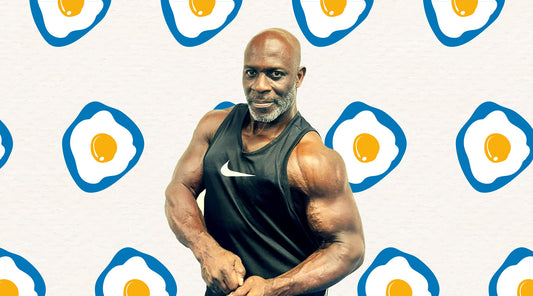Neuroscientist Andrew Huberman is known for his protocols to improve the many different aspects of our health. He is passionate about cold and hot exposure, and states that regular sauna-use can reduce the probability of dying from a cardiovascular event by up to 50%. But what does the science say, and how can saunas make us healthier and live longer?
The Science Behind Saunas
Andrew Huberman says studies show that if you use a sauna two or three times a week you reduce the likelihood of dying of a cardiovascular event by 27%. If you use a sauna four or more times per week you reduce the probability of dying by 50% from a cardiovascular event.
Deliberate heat exposure, such as using a sauna, has positive effects on our cardiovascular system. Huberman says that: “Blood flow increases, plasma volume of your blood increases, and stroke volume – the volume of blood that is mobilized with each beat of your heart also increases.”
He likens sauna-use to cardiovascular exercise in a form that you don’t need to move your body, stating: “Your heart rate increases to anywhere between 100 to 150 beats per minute. That general constellation of effects looks a lot like cardiovascular exercise. And in fact, it really is cardiovascular exercise except that there isn’t the mobilization and the loading of joints and limbs and things of that sort.”
Huberman continues: “Basically your heart starts beating, more blood starts circulating, your vasculature changes shape literally to accommodate those increases in heart rate and blood volume. You’re basically getting a cardiovascular workout in that hot environment even if you’re just sitting down.”
The Health Benefits of Saunas
Cortisol
While the body needs a certain amount of cortisol, prolonged stress can see cortisol increase to unhealthy levels. A 2021 study titled “Endocrine Effects of Repeated Hot Thermal Stress and Cold Water Immersion in Young Adult Men” focused on specific hormone levels before and after sauna use.
This protocol saw a number of men attend four sauna sessions of 12 minutes each. The temperature of those saunas was 90 to 91 degrees Celsius (194 degrees Fahrenheit). Afterwards they had a six-minute cool down break where they got into some cold water of about 10 degrees Celsius (50 degrees Fahrenheit). During the study, hormones such as testosterone, DHEA, prolactin, and cortisol were measured at different intervals before and after the sauna sessions.
The standout result from the study was a significant decrease in cortisol levels, the so-called “stress hormone” after sauna-use. Andrew Huberman says: “I think this is really important because many people suffer from acute, meaning immediate, and long-term stress and are looking for ways to control their stress.”
He continues: “Many people are over-worked they are over-stressed. For one reason or another they’re subjected to too many stressors, or their level of stress resilience isn’t high enough to keep their cortisol levels clamped at a healthy level.”
Thanks to these findings and similar studies we now know that saunas provide a tool to reduce cortisol levels. Regular use will lower cortisol levels and associated stress.
Heat Shock Proteins
Andrew Huberman states that it’s well-established in animal and human models that sauna exposure activates something called heat shock proteins. He says: “Heat shock proteins are a protective mechanism in your brain and body to rescue proteins that would otherwise misfold.”
Huberman explains: “What do I mean by this? Well, most of you are familiar with the fact that if you have protein in the kitchen like a steak, a piece of chicken or a piece of fish and you heat it up, it changes its texture. Raw meat is different than cooked meat. Heat changes the quality of proteins and the way in which they are configured. It changes right down at the molecular level. When your body goes through changes in temperature each day in response to hot and cold environments heat shock proteins are deployed to go and rescue and prevent the changes in proteins that would be detrimental to your health.”
Human biologist and bio-hacker Gary Brecka is also a big fan of using saunas. Talking about saunas in relation to heat shock proteins he says: “Heat shock proteins are specialized proteins in your liver that are just waiting for your body to experience extreme temperatures. When you do it releases these heat shock proteins into the bloodstream and what happens is they accelerate the rate of protein synthesis, they scour your body of free radicals, and they increase your muscle recovery.”
DNA Repair/Longevity
Regular sauna-use can extend our lifespan due to the benefits it provides our cardiovascular system. It also upregulates something called FOXO3. Andrew Huberman explains: “Sauna exposure, in particular sauna exposure two to three times or ideally four to seven times per week in that 80 to 100 degree Celsius range, has been shown to upregulate levels of FOXO3. FOXO3 in turn upregulates pathways related to DNA repair and clearing out senescent or dead cells which is known to be important for various aspects of maintaining cognition and other aspects of maintaining health.”
He continues: “One especially interesting thing about FOXO3, there are individuals out there that have additional copies of FOXO3 or have versions of FOXO3 that are hyperactive. Those people tend to be 2.7 times more likely to live to 100 years of age or longer. These were people that were just naturally and fortunately for them endowed with more FOXO3, more clearance of senescent cells, more DNA repair etc.”
Studies have shown that deliberate heat exposure is one way that you can increase FOXO3 activity. An increase in FOXO3 can offset some of the cardiovascular risks and other forms of mortality.
Sleep
Regular sauna-use can also improve sleep. When our body is exposed to hot temperatures, like in a sauna, our core body temperature in fact cools down. In order to fall asleep our body is required to cool down by 1-3 degrees. Andrew Huberman states that: “Body temperature and the ability to fall asleep and stay asleep and wake up are very tightly correlated. Your whole circadian rhythm is temperature driven.”
He explains: “When you heat the surface of your body you would think ‘oh you know my whole body temperature is getting really hot but if I were to measure your core body temperature what happens is your medial pre optic nucleus of the hypothalamus says ‘oh the surface of my body is really hot I’m going to cool down my core temperature’ and falling asleep at night requires a 1 – 3 degree drop in bodily temperature and when you wake up in morning you have a 1-3 increase in bodily temperature. That triggers a cortisol spike, that triggers norepinephrine, and then you start waking up.”
How Often Should You Use the Sauna?
The number of times you use a sauna per week will depend on your goals. There is a specific protocol designed to increase human growth hormone which is four 30-minute sessions in one day, and this is recommended to be done once every 7 – 10 days. This kind of protocol is designed for someone who is wanting to increase muscle mass, muscle recovery, or recover from an injury.
However, if you are looking to use the sauna for the health benefits mentioned in this article, Andrew Huberman says: “For the reduction in likelihood of dying of a cardiovascular event, stroke or otherwise the more often you do sauna the better. If you look at all-cause mortality or death due to cardiovascular events and you look at sauna-use frequencies…basically the more often you get into the sauna for 30 minutes across the week the better. 4 times a week is better than two times a week, and two times is better than one.”
He continues: “At this point in time there is no sauna protocol designed to specifically reduce cortisol or specifically to increase FOXO3 or specifically to activate heat shock proteins. Any deliberate heat exposure is likely to impact all of those mechanisms. Again I advise you to use this guide of 80 to 100 degrees Celsius as your kind of bookends for what you can tolerate…I would encourage you to use that five to 20 minutes per session for the sauna.”
If you're thinking about investing in a home sauna you can learn more about them here.
Read more: Gary Brecka – Sauna Benefits & Heat Shock Proteins





